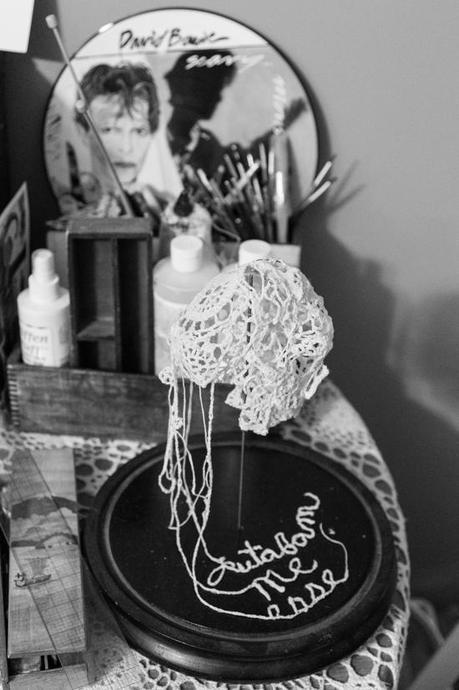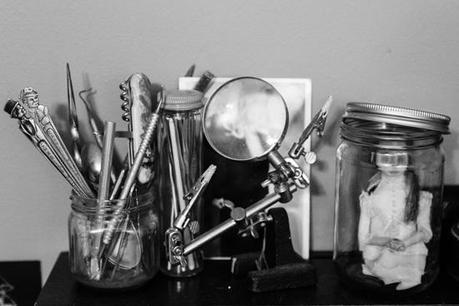
What I remember most about art history class was not so much the work of the artists, but the lives of the creative savants. The hanging or freestanding piece he or she created was interesting, yes, but how they spent their daily lives was so cool to me. Braque hanging out with Picasso and Dali chatting with Fitzgerald – there was a culture or group of European artists in the early 1900s who passionately lived and breathed artwork. When Caitlin started opening up to me about her life and work, I started having flashbacks of my days at a student at The Savannah College of Art and Design. I couldn’t help but think that I was hearing about someone’s story who just like Picasso, lived their work with all their heart.

Hi, my name is Caitlin McCormack and I started sewing when I was very young. My grandmother and my aunt were excellent seamstresses; my aunt made most of my mother’s wardrobe when she was in middle school. My family noticed that I had an interest in sewing around the age of four, so they trained me how to crochet and make and repair clothes by hand, eventually with the aid of a rusty Singer machine from the 1950′s that smelled of oil. The rest of my sewing skills came from a very unprofessional and untrained type of solitary experimentation, i.e. desperate attempts to patch holes in my pants before school. My parents were not well off financially, so acquiring material goods when I was a teenager required me to make or alter them. I always used out of date materials and methods, but I was still able to repair and recreate the things that I wanted. I certainly don’t put much stock in my abilities as a qualified seamstress today, but I think I learned enough from my family that I can make things work for my own purposes.
While studying illustration at The University of the Arts, I had a very hard time finding my niche. There is a lot of pressure, as I’m sure there is with any artistic field, to find a style that is truly representative of your needs as an artist, which I couldn’t quite identify at that age. I oscillated between realistic drawings and a really terrible, ink-splattered, Ralph Steadman kind of thing, because I was afraid that incorporating sculpture into my work would deviate too far from traditional illustration. Towards the end of the summer before my senior year, I decided to strive for what I had been wanting to do throughout college, which borrowed heavily from my pastimes as a child and from what my family had taught me: to make dolls, dress them in tiny pants, photograph them, and thus take something tangible and translate it into a two-dimensional format. This not only resonated more with me, but also my professors. They could sense that I was communicating more effectively with this medium.
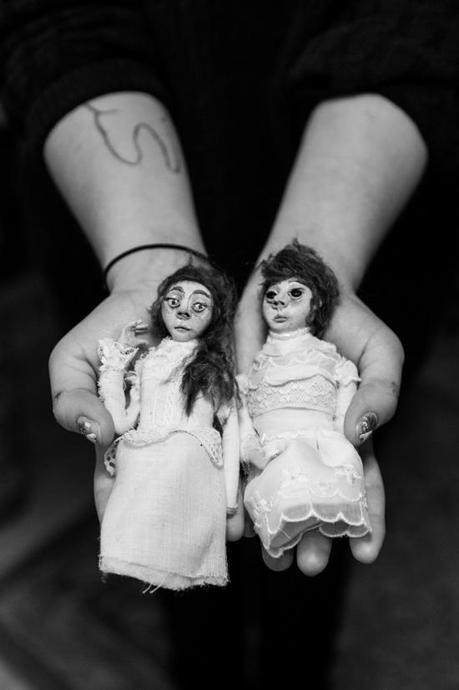
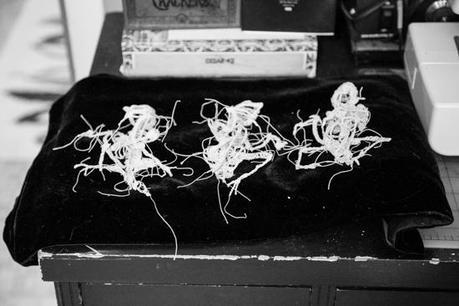
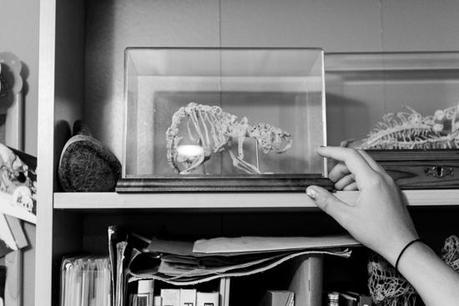

I divide my time between two different art forms: three dimensional illustrations and fiber sculptures. For the illustrations, I construct small dolls using wire armatures, onto which crude body-mass forms are sewn using burlap or canvas. Faces and extremities are made primarily from Super Sculpey, a clay-like modeling compound which can be sanded and painted after it is baked in an oven. Once the cooled Sculpey parts are painted and attached to the body, another layer of padding is applied more conscientiously, so as to imply the presence of breasts, hips, and volume in general. Teeny tiny garments are hand-sewn, the doll is dressed, and hair, which is often made of feathers because the tiny strands are proportionate with the diminutive size of the body, is applied. After constructing an environment, the tiny tableau is photographed, using daylight, from many angles. Using Photoshop, I discern which photo is the best and manipulate the image as minimally as possible, and print it out. Thus, something very tactile becomes a two-dimensional illustration, conveying a narrative.
My favorite part of the process is finding textiles that are size-appropriate, considering each doll’s small stature. A sample of gingham might look delicate on a human, but it will look seriously wrong (HUGE!) if worn by a five-inch-tall man. Thus, I have to keep an eye out for tiny plaids, calicos, and so on, or make them myself using fabric markers and ink.
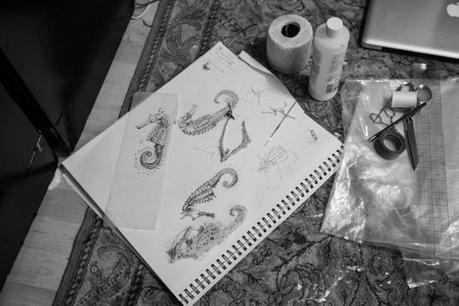
When I am not working on three-dimensional illustrations, which communicate very directly, I indulge in my secretive, more allusive side by crocheting and sculpting forms based on animal skeletons I have seen. Initially, a drawing is rendered from memory. The drawing isn’t necessarily anatomically correct – I’m interested in the distortion of ideas that memory can incur, and how far something can be removed from its authentic source before it is warped beyond recognition. As time is spent constructing each object, I focus on a specific memory. In a way, each sculpture embodies an incident from my life. Materials that were, for the most part, inherited from my deceased relatives are crocheted with a 1.25 hook to generate yardage that is subsequently stiffened with glue or fabric stiffener. The material takes on a bone-like texture and color, and is eventually shaped and sewn into forms closely resembling the skeleton drawings. The forms usually stand on their own in display boxes, but lately I’ve taken to pinning them to black velvet and putting them in frames, like insect specimens. They are very delicate.
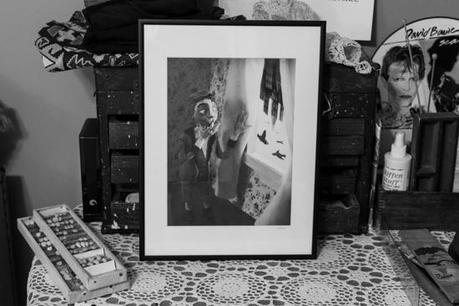
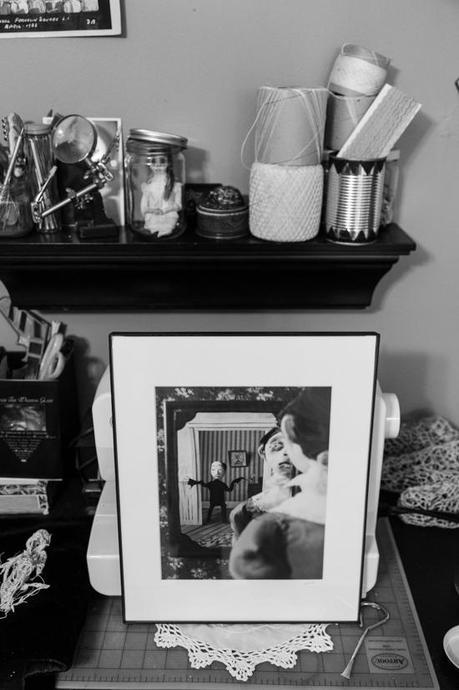

My parents are, and have always been, extremely powerful forces in the development of my aesthetic preferences and skills. My mother is an oil painter and collage artist and always made a variety of antique fabrics available to me as a child. She kept them away from moths in assorted bags and drawers in the studio that she and my father shared, an uninsulated room jutting out from our tiny cabin in the woods. My father makes all sorts of things; he will find a way to construct almost anything, which is really awe-inspiring. Lately, he’s taken to building insane guitars, but he has been painting in acrylic and watercolor for most of his life. My parents opened a gallery near their house a little over a year ago, and it’s doing really well. They work so hard. I definitely idolize them.
I’ve had other mentors too. Without advice from Tom Leonard, my Pictorial Foundation professor UArts, and Robert Byrd, with whom I engaged in an independent study based on illustrating The Zürau Aphorisms by Frank Kafka, I never would have been motivated to employ sculptural media within the parameters of illustration. Mark Tocchet and Tim O’Brien were also extremely supportive as professors.

I don’t necessarily find my work appealing, but I really enjoy the process, especially the construction. I also enjoy imparting a narrative with illustrative imagery, just as much I as like to make sculptures that are personally symbolic, and conversely more withholding. I am alternately a very communicative (albeit occasionally inarticulate) person and a very secretive one. Both sides sort of sustain each other, I guess, and being able to support that relationship is appealing.
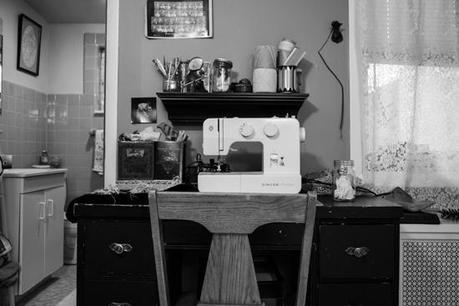
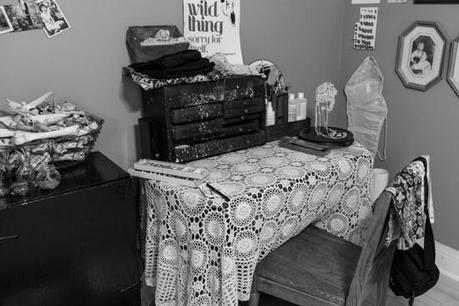
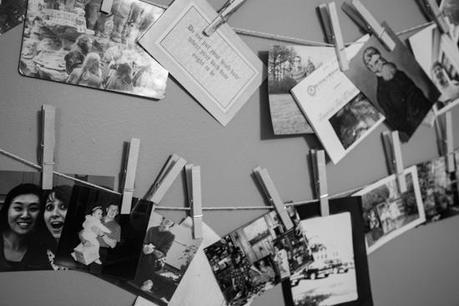

I’m not the most positive person, to be honest and it is really difficult to feel satisfied with an object or image once it is finished. My general reaction is to hate what I’ve made for a long time. A lot of people share that sentiment; it’s so hard to discern when a piece cannot be worked on anymore, and to live with the results that have been conjured up by weeks and weeks of work can really be painful. Sometimes it doesn’t make sense, and it does other times. A garment can be finished, but there are so many loose ends to trim, and so on. Or maybe that’s just me, because I sew like a bear that has been taught how to sew, haha. At what point does satisfaction just naturally start to drift in? I don’t think that’s supposed to happen. I really like doing what I do, it feels good, even if I don’t necessarily feel proud of the results. It gives me a reason to challenge myself continuously.

Simply put, and there are many exceptions to this, illustrators are asked to accompany text with imagery, and to render a translation that communicates information directly and attractively. After graduating, I felt less inclined to illustrate text from stories that I liked and began deriving imagery from dreams. My depictions began to take on uncanny qualities. Additionally, my fiber sculptures began to materialize in increasingly representational forms. It’s as if the two are trying to meet somewhere in the middle.
